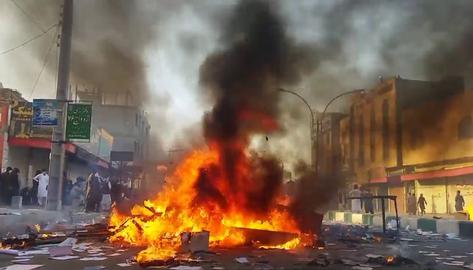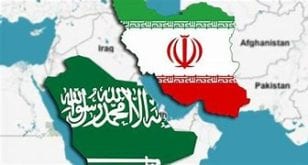Iranwire – “There are so many of them that I grapple with deciding which one to tell you about. I find myself quite perplexed.”

These are the words of a Baluch civil activist who, with a heavy heart, helped IranWire compile this report on the circumstances surrounding the death of some of the innocent victims of Zahedan’s Bloody Friday.
September 30 will mark a year since security forces killed at least 108 protesters, bystanders and worshippers, including children, in the capital of southeastern Sistan and Baluchistan province, according to local human rights groups. The victims included a two-year-old toddler and an 88-year-old woman.
The unrest erupted some two weeks into nationwide protests demanding fundamental changes in the country, but its trigger were accusations that a police officer in the province had raped a 15-year-old girl, Maho Baluch.
Dreams Buried in the Dust: Hasti, Samer, Javad, Ali and Mohammad
Protesters took to the streets of Zahedan after Friday prayers on September 30, 2022, to protest the death in police custody of Mahsa Amini and the rape of Maho Baluch in Chabahar.
The angry protestors were met with a brutal crackdown, with the security forces of the Islamic Republic firing bullets at the crowds.
On November 4, scores of protesters were also killed by security forces in the city of Khash, in Sistan and Baluchistan.
According to the human rights organization Haalvsh, at least 19 minors were among those killed in Zahedan and Khash. These young victims included Hasti Naroi, 7, Omid Sarani, 13, Daniyal Shahbakhsh, 11, Sodeis Kashani, 14, Mohammad Rakhshani, 14, Javad Pousheh, 12, Ali Barahoei, 14, and a two-year-old girl, known only by her last name, Mirshekar.
Human rights activists say Mirshekar was innocently playing in front of her home in Zahedan when a bullet from the police fatally struck her, ending her young life.
Hasti Naroi, the seven-year-old victim, had accompanied her grandmother to Makki mosque for Friday prayers when a tear gas canister struck her head and killed her.
Samer Hashemzahi, 14, was known among Persian-speaking social media users for a joyful dance he performed at a wedding party. Despite facing severe economic hardships, he persevered in pursuing his education.
The images of his lifeless body, lying in a pool of his own blood, triggered profound anger and sorrow among the protesters.
Javad Javad Pousheh, a 12-year-old boy from Shirabad, Zahedan, did not have an identification card, like many Baluch citizens.
His family lived in such destitution that they could not afford a gravestone for the young boy.
According to a source, Javad was denied access to education as he lacked a birth certificate.
“Before robbing this child of life and his right to education, the Islamic Republic had already deprived him of the basic right of obtaining a birth certificate in the very land of his birth and that of his ancestors,” the IranWire source said.
Ali Barahoei, 14, sustained a fatal gunshot wound in the head.
Women Bathed in Blood: Zar Bibi, Zoleikha and the Unnamed
Sangin (Zar Bibi) Ismailzahi, 60, was with her one-and-a-half-year-old grandson when a bullet hit her back.
In a video circulated on social media, she said her doctor had removed an AK-47 bullet from her body.
Ismailzahi died of her wounds after four months of suffering and agony.
Zuleikha Tarzi, 88, was the grandmother of Hasti Naroi, the seven-year-old girl killed by a tear gas canister.
Human rights activists said that the woman died from inhaling tear gas.
The Haalvsh Organization reported in December that she was an Afghan national who had lived in Zahedan for many years.
The security agencies reportedly warned her relatives that their residence permit would be canceled if her death was reported by the media.
The name of the third woman who lost her life on Bloody Friday is unknown.
“For reasons deeply rooted in tradition, custom and culture, her name and information about her have not been revealed,” the Baluch activist told IranWire.
Victims of Poverty and Injury: Mansour, Habibullah, Saeed, and Mohammad
Saeed Rigi Mohammadzahi suffered serious injuries to his back, kidney and hand when three live bullets struck him on Bloody Friday.
He underwent a total of five surgeries. He lost his life in a car accident in March while en route for his sixth surgery.
He met the same fate as hundreds of other Baluch citizens who die on treacherous roads every year.
‘It is the inevitable destiny of most Baluch people to die either by the regime’s bullets, the gallows, or on the treacherous roads where people are sacrificed. They are left with no choice,” the source said.
Mohammad Rigi, 29, suffered multiple gunshot wounds to his stomach, kidney, lung and liver.
He endured 97 days of agonizing pain until succumbing to his injuries.
Mansour Hormozi, 24, died 108 days after being shot. He remained in a coma at Khatam Hospital in Zahedan.
 Shabtabnews In this dark night, I have lost my way – Arise from a corner, oh you the star of guidance.
Shabtabnews In this dark night, I have lost my way – Arise from a corner, oh you the star of guidance.



